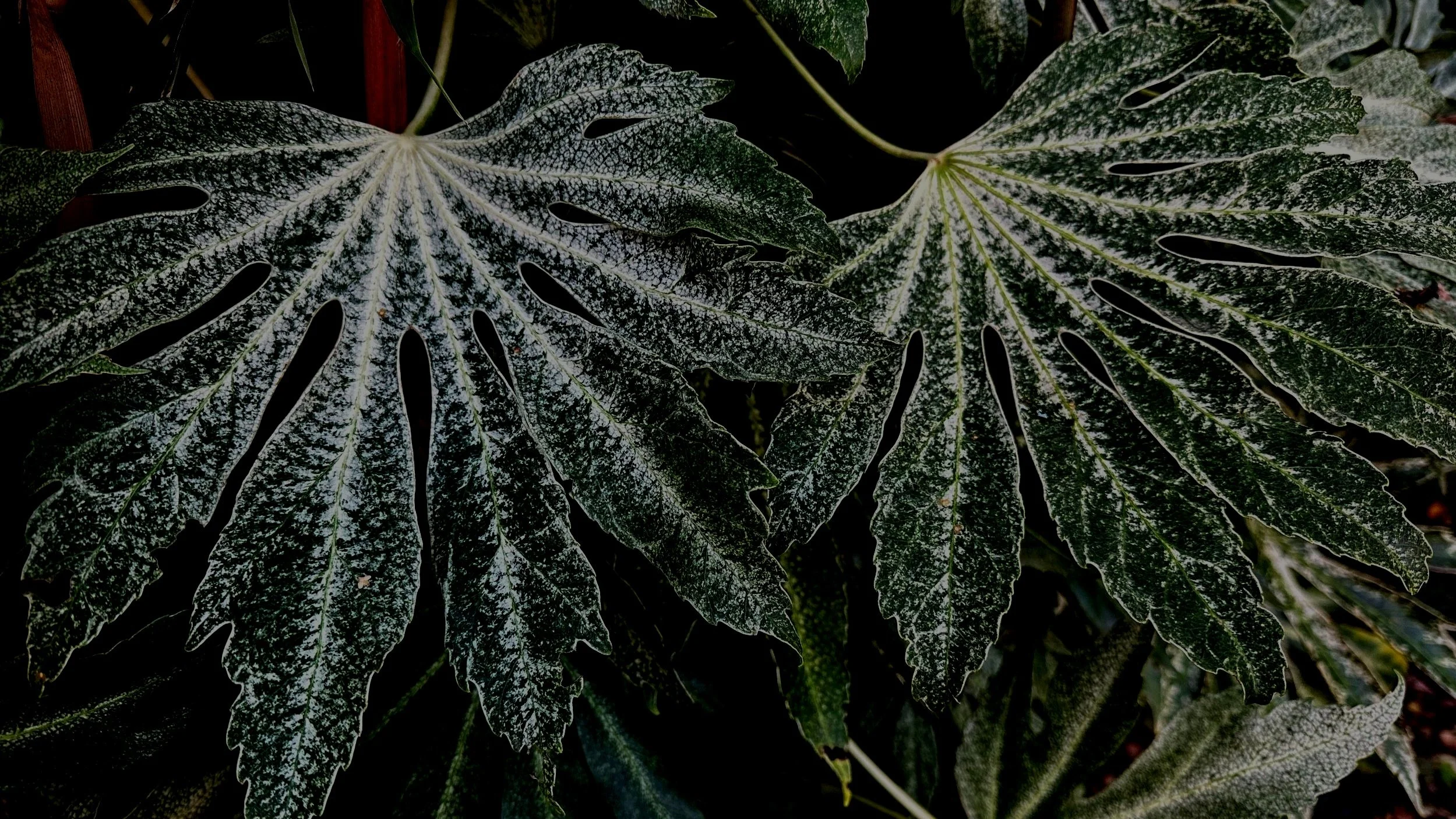When you are a plant nerd like me, there is no end to the list of plants that fall into the category of “most favorite”. There are many characteristics that can make a plant qualify for that most coveted classification, such as ease of growing, long blooming season, dramatic or colorful foliage, bloom time, fragrance, hardiness, and so on and so forth. It is not necessary or realistic for that matter to expect a plant to possess all of the above traits, but it should at least be outstanding in one or more to make it to my list of “most favorite”. Fatsia japonica (commonly known as Japanese Aralia) is one such plant!
The Missouri Botanical Garden describes Fatsia as follows: “Fatsia japonica, commonly called Japanese aralia, is native to Japan. It is an evergreen shrub or small tree that typically grows to 16’ tall in its native habitat. This is an attractive foliage plant noted for its palmately lobed glossy dark green leaves (to 16” wide) that typically have 7 to 9 deep lobes. Small creamy flowers in umbels bloom in fall, followed by black berries.” Monrovia Nurseries gives us a bit more information: “Large, exotic, rich green foliage adds an exciting and bold tropical look to landscapes and patios. Great in a shaded entryway or patio, or in a sheltered spot near a water garden or dipping pool. Perfect for outdoor containers or as a houseplant. Ideal for low light, urban settings. Winter flowers are followed by black ornamental berries.”
I have always been drawn to Fatsia because of its ability to thrive in shady areas in the garden and its bold texture, which provides some drama and excitement, particularly in a shady area where the predominant textures seem to be fine and diminutive. It will grow into a multi-trunked small tree, maybe 12 feet tall, where lower growing plants can be placed underneath it (it naturally sheds it lower leaves as new whorls grow out in spring), or it can be keep around 6 feet tall and maintained more like a large growing rhododendron. It is not suitable for shearing into a hedge, so don’t even go there. However, if it gets too tall it can be chopped down to one or two feet tall in the spring and it will come right back to form a nice bushy plant in one season.
The flowers are a bit bizarre and would probably not be considered even close to being beautiful. They are what I would call “structural” or “architectural”, which in my book makes them just as worthy to have in the garden. Normally they bloom in late fall, or even early December, and are often damaged by a hard frost, which for many of you may not be a big loss. When they do bloom early enough, they will be covered by pollinators, more often flies rather than bees - hopefully that doesn’t sound too gross.
I grew up with Fatsia in California, back in the day when the solid green-leafed version was the only option available in the trade. Today there are two additional cultivars for gardeners to choose from; ‘Spider Web’, which has outstanding green and white variegation and is a much more compact and slower grower, and ‘Camoflague’, which sports dramatic green and yellow variegation and is a strong grower. This time of year in the garden center, you can find Fatsias featured as thrillers for winter containers as well as foundation plants for the shade to partial-shade areas of the garden. For some bold texture in the shade garden or a container, Fatsias are hard to beat. Give them a try and see if you don’t agree!



